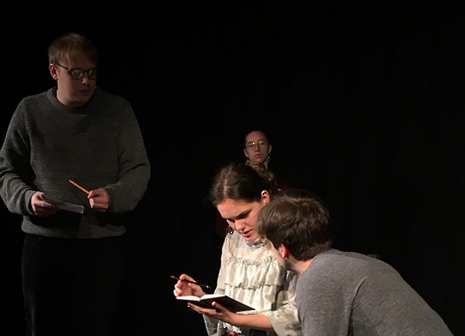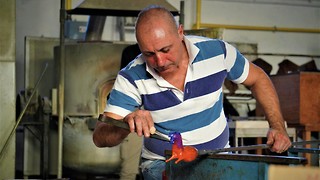The Plague preview
Riona Millar joins the cast and crew of The Plague as they prepare to adapt a complex and thought-provoking script

The Plague is a play, above all else, about frustration. When I was talking to Co-director Odette Baber Straw and to the actors about the relevance of the play now, and why Neil Bartlett might have adapted Albert Camus’ 1947 novel, we considered the idea of common themes. Particularly striking, they said, was denial: the denial of a crisis taking place until it is too late to be manageable.
"[The cast] mentioned enjoying the opportunity to be involved in a play with a non-linear plot arc."
When it was originally written, it was instantly seized upon as an allegory for Nazism; Bartlett has spoken about how he wrote it as a response to Brexit. Perhaps a crucial difference between Camus’ novel and the play is its setting: while Camus’s plague takes place in Oran, Algeria, Bartlett’s plague could be anywhere and anytime. The characters are all men, but in this production are not and were not required to be played by men; the script’s requirements for set are also sufficiently limited as to be interpretable in any period. The directors’ vision for the piece was in fact to keep this intact, ensuring that it is as minimalist as possible, and can be viewed as any crisis, anywhere, allowing their audience to explore their own responses to both societal and personal crises, within the safe space of a fictional reality.

The play was chosen by Odette Baber Straw, a philosophy student, who was fascinated by Camus’ theory of the absurd. She enjoys that the play introduces people to that particular philosophical notion in the accessible format of a play, and both she and Co-director Craig Stewart appreciate the play for its anonymity and its unique use of tense to produce both narration and retrospective commentary through flashbacks and recollections. This is something that the cast were also drawn to, and they mentioned enjoying the opportunity to be involved in a play with a non-linear plot arc.
In terms of the preparatory process, close attention was paid to physicality, and in the initial stages of production, the play’s Associate Directors, Jonathan Iceton and Amara Heyland-Morrin, ran a workshop to develop and hone the ideas of the physical. Those skills were used, says Baber Straw, to allow the cast to differentiate characters and to bring a sense of location to a varied set, a set which suits a script that takes us everywhere. Such a set could be daunting for a crew, but not so for Baber Straw and Stewart’s team. In terms of staging and structure, this will be the Corpus Playroom’s most technically complex set, with a flat constructed in the ADC deconstructed and transferred here. It is beautiful, entangling and fluid, and had I think one of the longest get-ins probably in the Corpus Playroom’s history.
The Plague is, at times, harrowing, with its focus on an epidemic and a town in crisis. But part of the appeal, says Baber Straw, is that in Bartlett’s adaptation, the removal of location makes it relevant for any modern audience, and refocuses on how humans unite in crisis, offering a more optimistic portrayal than Camus’ original novel. And indeed at the end of the play, the main takeaway is a message of hope.
 Comment / The (Dys)functions of student politics at Cambridge19 January 2026
Comment / The (Dys)functions of student politics at Cambridge19 January 2026 News / Local business in trademark battle with Uni over use of ‘Cambridge’17 January 2026
News / Local business in trademark battle with Uni over use of ‘Cambridge’17 January 2026 Features / Exploring Cambridge’s past, present, and future18 January 2026
Features / Exploring Cambridge’s past, present, and future18 January 2026 News / Your Party protesters rally against US action in Venezuela19 January 2026
News / Your Party protesters rally against US action in Venezuela19 January 2026 Arts / Exploring Cambridge’s modernist architecture20 January 2026
Arts / Exploring Cambridge’s modernist architecture20 January 2026








